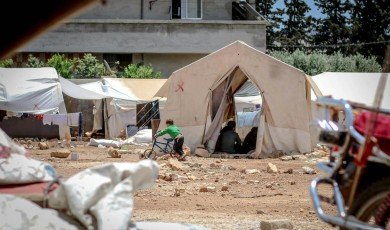
When families are forced to leave everything behind, homes, careers, even loved ones, the road ahead can feel uncertain. Refugees are not only displaced geographically; they are also displaced emotionally, socially, and economically. Yet, amid the loss and hardship, countless examples of resilience emerge. From refugee camps to urban neighborhoods, displaced communities demonstrate extraordinary determination to rebuild their lives and contribute to the societies that welcome them.
The First Steps: Survival and Safety
The initial phase for refugees is simply survival. Camps or temporary shelters often provide the first refuge, where food distribution, medical assistance, and humanitarian aid become lifelines. At this stage, dignity can feel stripped away, as people wait in long lines for basic necessities. However, even within these conditions, refugees begin to organize themselves, sharing skills, establishing informal schools, and creating social networks that mimic the stability they left behind.
Education as a Path to Resilience
Education is often one of the strongest tools for refugees to reclaim control of their future. In many camps, parents and volunteers set up makeshift classrooms to ensure children continue learning. Access to formal education in host countries further enables refugee children to integrate, acquire language skills, and open doors to future careers. Adults, too, seek vocational training to rebuild their professional identities, showing that resilience is deeply tied to opportunities for learning.
Work, Dignity, and Contribution
Employment is not only a means of survival but also a pathway to dignity. Refugees often possess skills, trades, and qualifications that can enrich their host countries. From medical professionals resuming their practice abroad to entrepreneurs starting small businesses, work becomes a cornerstone of resilience. However, barriers such as legal restrictions, recognition of qualifications, and discrimination can hinder this process. Community initiatives and NGOs often step in to connect refugees with job opportunities and training programs.
Building Social Networks and Community Life
Resilience is also cultivated through social bonds. Refugees often create community organizations, cultural groups, and support networks that preserve identity while fostering connection with host communities. Festivals, religious gatherings, and cultural exchanges allow refugees to maintain a sense of belonging. This duality, holding onto roots while adapting to new soil, is what allows communities to thrive.
The Role of Technology
In the digital age, technology has become a lifeline for displaced communities. Mobile apps connect refugees with legal aid, health services, and job opportunities. Social media platforms allow them to stay in touch with family members scattered across the globe. Interestingly, some refugee-led organizations have adopted off-page seo strategies to amplify their stories online, ensuring their voices reach policymakers, donors, and global audiences. By increasing visibility through digital tools, refugees showcase their resilience not only locally but worldwide.
Health and Healing
The physical and psychological toll of displacement is immense. Refugees may face trauma, malnutrition, and limited healthcare access. Resilience here often means seeking healing, through counseling, community support, or traditional practices carried across borders. Host countries that invest in accessible healthcare for refugees often see stronger outcomes in integration, as healthier individuals are better able to work, study, and participate in community life.
Stories of Rebuilding
There are countless stories that embody refugee resilience. A teacher from Afghanistan establishing a school in a refugee camp. A Syrian chef opening a restaurant in Europe, bringing flavors of home while creating jobs for locals. A young refugee athlete competing internationally, inspiring others with her determination. These narratives remind us that resilience is not abstract; it is lived and demonstrated daily in small, powerful acts of rebuilding.
The Role of Host Communities
Resilience is not built in isolation. Host communities, NGOs, and local governments play crucial roles in shaping refugee outcomes. Policies that allow access to education, healthcare, and the labor market empower refugees to contribute fully. Civil society initiatives, from language courses to mentorship programs, strengthen bonds between newcomers and locals. Digital campaigns, amplified through methods like off-page seo, also help raise awareness and counter negative stereotypes, fostering empathy and understanding.
Conclusion
Refugees are often portrayed as victims of circumstance, but their stories are also stories of strength. Resilience does not mean the absence of struggle, it means the ability to persist and rebuild in the face of overwhelming challenges. By creating opportunities, dismantling barriers, and fostering inclusive societies, we can ensure that displaced communities not only survive but thrive. The resilience of refugees is a testament to human spirit, reminding us that rebuilding is always possible, even in the most difficult conditions.







